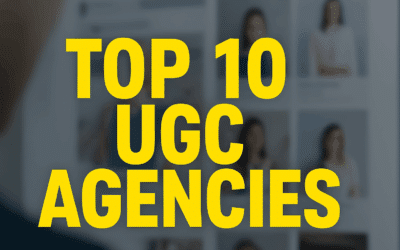Award Winning Digital Marketing Agency
Proud to be the #1 Rated SEO Company / Digital Marketing Agency in Boston & Globally since 1998
SEO Services
Local SEO
Enterprise SEO
Ecommerce SEO
PPC (Google Ads Management)
Social Media Management
Paid Social (SMM)
Ecommerce Marketing
America’s Leading Digital Marketing & AI SGE SEO Agency

Let’s Chat
"*" indicates required fields
Award Winning Digital Marketing Agency
Proud to be the #1 Rated SEO Company / Digital Marketing Agency in Boston & Worldwide since 1998
SEO Services
Local SEO
Enterprise SEO
Ecommerce SEO
PPC (Google Ads Management)
Social Media Management
Paid Social (SMM)
Ecommerce Marketing
America’s Leading Digital Marketing & AI SGE SEO Agency

Let’s Chat
"*" indicates required fields
End-to-End Digital Marketing, AI SEO, and Performance Strategy Trusted by Global Brands
World Class Integrated Digital Marketing Solutions & Services
Fuel Online is a results-driven SEO agency headquartered in Boston, specializing in full-service National digital marketing services tailored for enterprise brands, eCommerce companies, and service-based businesses. Fuel Online is the Nations Leading Ai SEO Agency, with the Only Ai Seo research department we will continue to be the leaders in SGE GEO Generative Search Optimization.. Our core expertise spans technical SEO audits, on-page optimization, white-hat link building, programmatic SEO, and high-converting content strategy. As a top-rated SEO services provider, we work with Google algorithms—not against them—to future-proof your rankings.
We are a full‑service digital marketing agency specializing in SEO, PPC, social media, and AI‑driven Search Generative Experience (SGE) optimization. As A Online Marketing Agency Since 1998, we’ve delivered measurable growth for global brands. Consistently awarded the Best Agency for SEO and we Have over 100 + Awards for Top SEO Optimization Agency.
Fuel Online is a nationally recognized, award-winning digital marketing agency known for delivering elite-level SEO, paid media, and AI-powered growth strategies. With over two decades of performance-driven Online Marketing Agency results, our strategy leads the industry in advanced SEO for Google SGE, AI search, and next-gen content discoverability. We don’t follow trends — we research, test, and engineer them. Our in-house AI SEO division is one of the only dedicated teams in the country built to optimize for Google’s Search Generative Experience (SGE) and AI-driven ranking factors. From enterprise brands to bold startups, we help clients dominate visibility, outrank competitors, and build long-term digital authority — all backed by real data, real strategy, and relentless execution.

Fuel Online leads the industry in AI SEO services, helping brands future-proof their search visibility in the era of generative search and AI-driven platforms. As one of the most advanced AI SEO agencies, we specialize in Generative Engine Optimization (GEO), reverse-engineering how Google’s AI Overviews, ChatGPT, Perplexity, and other large language models surface answers. Our AI-powered SEO strategies go far beyond keywords, leveraging entity optimization, structured data, and predictive analytics to position your brand as the authoritative choice in its niche. Whether you need enterprise-scale AI SEO campaigns, AI-driven content optimization, or integrated AI search marketing solutions, Fuel Online delivers measurable results with unmatched precision.
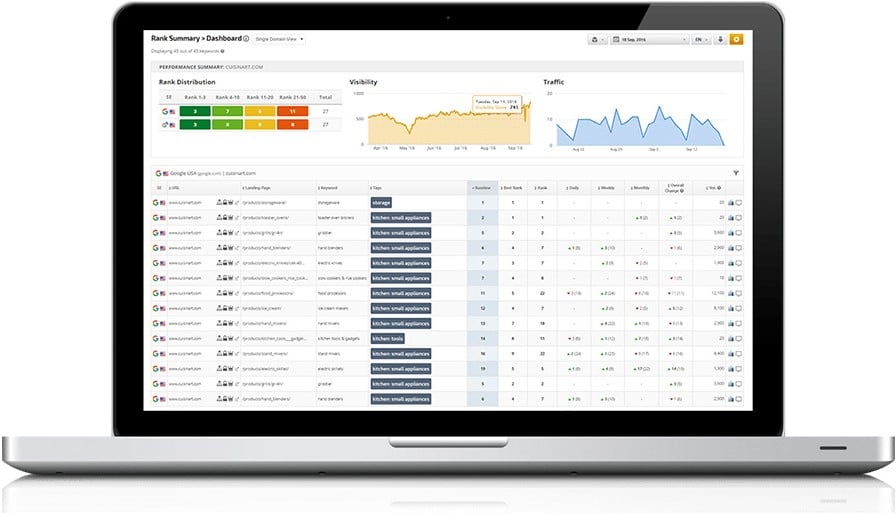
SEO Services from a Leading SEO Agency
When businesses need expert SEO services, they turn to Fuel Online — a top-rated SEO agency recognized nationwide since 1998. As one of the very first search engine optimization agencies, we pioneered many of the strategies that drive rankings today. Our proven track record as a trusted SEO company comes from decades of helping brands dominate Google and outperform the competition.
Fuel Online operates a dedicated SEO R&D department that tracks Google algorithm changes, AI-driven search updates, and evolving ranking factors. Every campaign is built with forward-looking, data-driven SEO services designed for sustainable visibility and growth. From local SEO to enterprise-scale search engine optimization, our systems deliver measurable increases in traffic and revenue.
With advanced tools, 24/7 rank reporting, and transparent performance analytics, Fuel Online stands as the #1 Boston SEO company and a trusted partner for businesses nationwide. If you’re looking for an SEO agency that combines innovation, experience, and results, our search engine optimization services are engineered to help your brand lead.
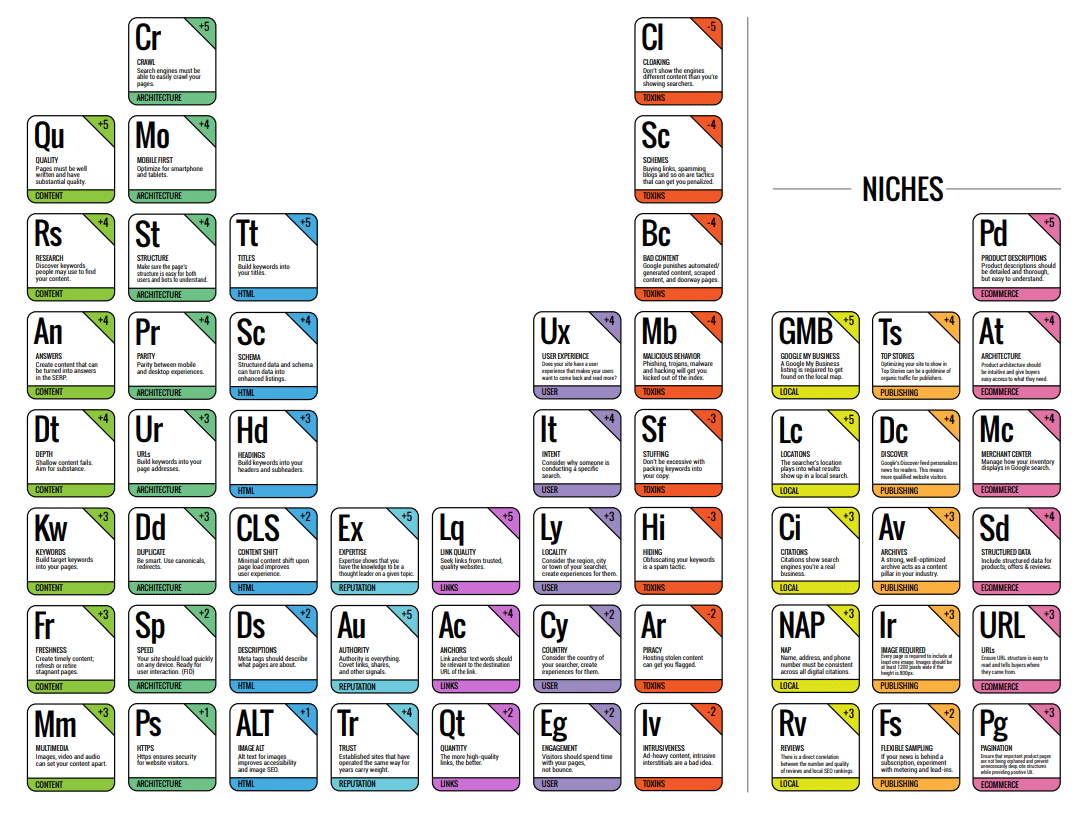
Enterprise SEO
Enterprise SEO is the practice of improving search engine rankings for a large, enterprise companies or the most competitive keywords. Enterprise seo services are right for those with extremely complex and high competition keywords, and a large volume of keywords or those who want to aggressively dominate search engine rankings at a cost. We have pioneered the most advanced scalable Enterprise seo strategy and data backed techniques. There are very few Enterprise seo companies in existence and even fewer that understand scale, how to target upwards of hundreds of thousands of keywords, content distribution, structure.
Social Media Management
Creating viral, inspirational, and addictive social media campaigns.
Our Social media management experience and knowledge has been recorded in a bestselling guide currently used in universities as course material. Let us put this experience to work for you. As a premier Digital Media Agency we pride ourselves in story telling brand building and providing value to consumers through quality content and elite Social media strategy. Your Social media Company represents your brand, image and voice, choose wisely!
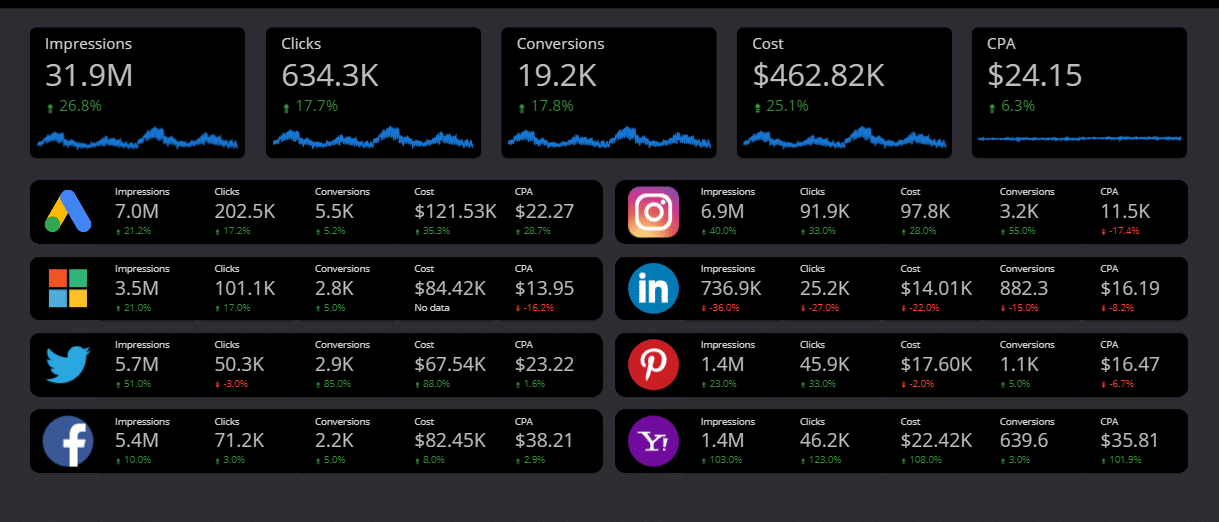
PPC
Full Service PPC Management
Our PPC Services can drive massive Sales & Leads for every organization. Pay Per Click management or Paid Search should be a part of every website's digital marketing strategy. We have certified and ward winning account managers who not only learn your business, but have decades of experience managing millions in PPC Management spend and use the latest technology, ai, data, reporting and performance metrics to ensure that absolute best ROI on your managed PPC Paid Search Spend.

Most Awarded Boston SEO Agency and National SEO Agency.
#1 SEO Optimization Agency
Clutch Top Rated Agency for SEO
#1 Rated AI SEO/SGE Agency
Dominating the AI Search Frontier. Trusted by Global Brands.
Fuel Online is the #1 Rated Ai SEO digital agency leading the next era of search visibility—where AI-generated answers, SGE (Search Generative Experience), and GEO (Generative Engine Optimization) shape the results users see first. With 25+ years of experience and a specialized AI SEO R&D lab, Fuel Online delivers unmatched performance in AI-first content systems, Google AI Overview optimization, entity embedding, and AI search result engineering.
We’re not just optimizing for blue links—we’re engineering visibility in the AI answer layer, Google’s AI snapshots, Gemini summaries, and ChatGPT-generated insights. Our strategies help brands embed directly into large language models (LLMs) for long-term inclusion, not just ranking.
From technical SEO to AI-driven authority building, Fuel Online is the seo optimization agency elite partner trusted by the world’s top brands to stay ranked, mentioned, and cited across AI-driven search experiences.
The Future of SEO is Here – AI SEO & Google SGE Optimization
📈 Looking to future-proof your visibility in the age of generative search? Fuel Online is built for that. We are The Agency for SEO

Fuel Online is an Award Winning Digital Marketing & Technical SEO Solution Driving the World’s Biggest Brands
Fuel Online pioneered the online marketing agency SEO Services and SEO strategy. We’ve managed hundreds of millions of dollars in digital advertising budgets across multiple platforms. Google Ads, Bing Ads, and Paid Social media. We are as passionate about digital marketing services today as when we were founded & take tremendous pride in our work, the media coverage, awards and accolades speak for themselves. Truly Experts in SMM, SEM, SEO, PPC Ecommerce SEO Agency services and Brand Voice Storytelling and Strategy.
As Seen In

Digital Agency Accolades & Awards
World Class Technology and Transparency
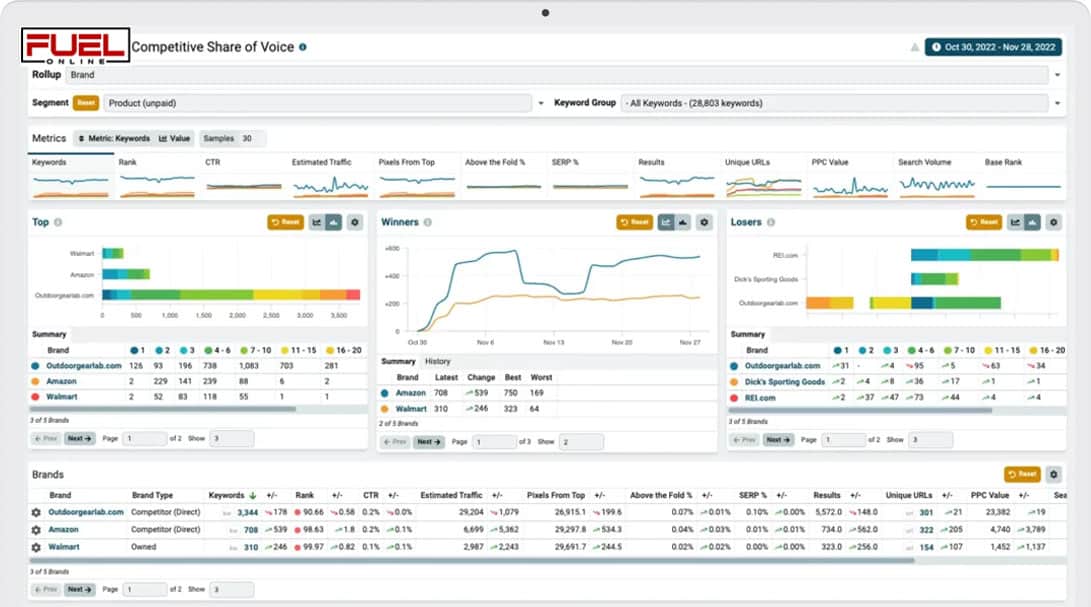
WHY CHOOSE FUEL ONLINE FOR YOUR DIGITAL MARKETING AGENCY?
Fuel Online is a full-service Boston digital marketing agency. We were founded long before any other digital agencies or Online Marketing Agencies existed and helped to pave the way and formulate many of the digital marketing techniques utilized today. We started off in 1997 as an SEO Company. Back there there almost no such thing as an SEO company or SEO agency. We did all of our own research, development and testing, and are proud to be considered the founding father of that industry. Today We’ve been providing a wide range of Digital marketing services to clients of all industries for a long time and continue to focus on Research, Analysis , & Testing versus being focused on Sales first. Our digital marketing services include Search engine optimization (SEO), Enterprise SEO, pay-per-click (PPC) ads, Amazon store optimization, Paid Social, and more. We are experts in helping companies fine tune their process and strategy to extract the most ROI. We work typically with Fortune 500 companies, Startups and mid sized companies. We know eCommerce Marketing and B2B Marketing inside and out, and are experts at Lead Gen. Fuel Online is proud to be headquartered in Boston and one of the most awarded digital marketing agencies in Boston as well as worldwide. Don’t just partner with any seo company or digital marketing agency; work with a company you can trust.
What is a Digital Marketing Agency?
A digital marketing agency is a an Online Marketing Agency or company that helps businesses grow online by offering services like SEO, PPC, social media marketing, and content strategy. At Fuel Online, we create tailored campaigns that deliver measurable results.
-
Professional SEO Services Tailored to Your Business
-
Rank #1 in AI Search, Voice Queries, and Local SEO
Trusted by Industry Leaders. Proven Across Verticals.
25+
Years of Digital Marketing Excellence
147
Five-Star Reviews on Google and other Platforms
$800M+
in Paid Media Spend Managed
📈 Real Results: 143% SEO Traffic Growth in 6 Months
Fuel Online helped a national eCommerce brand boost organic traffic by 143% and triple their keyword rankings within six months using a fully customized SEO roadmap.
🛠 Real Results: 212% Lead Growth for a SaaS Company in 90 Days
Fuel Online partnered with a B2B software startup to revamp their inbound strategy, resulting in a 212% increase in qualified leads from SEO and LinkedIn Ads within three months.
🛍 Real Results: $1.4M eCommerce Sales Increase in Q4
A premium DTC skincare brand saw a $1.4 million boost in Q4 sales after Fuel Online overhauled their Ecommerce SEO content, conversion funnels, and Google Shopping strategy.
🏥 Real Results: 4.8x ROI for a Multi-Location Medical Group
Fuel Online deployed a hyper-local Medical SEO and PPC strategy that generated 4.8x return on ad spend for a regional healthcare provider across 12 clinic locations.
💼 Real Results: 88% More Traffic & 3x Rankings for a Legal Firm
A national law firm partnered with Fuel Online and achieved an 88% organic traffic increase and tripled first-page keyword rankings within five months through a content-driven SEO campaign. Hence why Fuel Online is the #1 SEO for Lawyers
Some of our Our Digital Marketing Clients
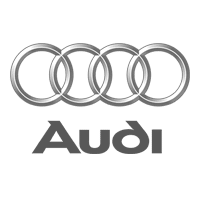

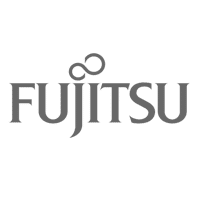

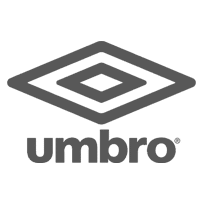

Digital Marketing Services FAQ
What is Digital Marketing
Digital marketing encompasses all marketing efforts that use electronic devices and the internet to promote products or services. It includes various online channels and platforms such as search engines, social media, email, websites, and mobile apps. Digital marketing strategies may include activities such as search engine optimization (SEO), pay-per-click (PPC) advertising, social media marketing, content marketing, email marketing, influencer marketing, and more. The goal of digital marketing is to reach and engage target audiences, build brand awareness, drive website traffic, generate leads, and ultimately, achieve business objectives and conversions in the digital realm.
Do I need to do digital marketing for my business?
There are several compelling reasons to invest in digital marketing for your business:
- Reach a Wider Audience: Digital marketing allows you to reach a vast audience across the globe, regardless of geographical boundaries. With online channels such as social media, search engines, and email, you can connect with potential customers who may not have been accessible through traditional marketing methods.
- Targeted Advertising: Digital marketing enables precise targeting of specific demographics, interests, behaviors, and even geographic locations. This targeted approach ensures that your marketing efforts are reaching the right audience, increasing the likelihood of conversions.
- Cost-Effectiveness: Compared to traditional marketing channels like print, radio, or TV advertising, digital marketing often offers a higher return on investment (ROI) for a lower cost. With tools like PPC advertising, you only pay when someone clicks on your ad, making it more cost-effective and measurable.
- Measurable Results: Digital marketing provides detailed analytics and reporting tools that allow you to track the performance of your campaigns in real-time. You can monitor metrics such as website traffic, conversion rates, engagement levels, and more, enabling you to make data-driven decisions and optimize your strategies for better results.
- Increased Brand Visibility and Awareness: Through digital marketing channels such as social media, content marketing, and search engine optimization (SEO), you can increase your brand’s visibility and awareness among your target audience. Consistent online presence and engagement help build brand credibility and trust over time.
- Engagement and Interaction: Digital marketing facilitates direct engagement and interaction with your audience through social media comments, email responses, live chats, and more. This fosters a sense of community and customer loyalty, leading to repeat business and positive word-of-mouth referrals.
- Adaptability and Flexibility: Digital marketing offers flexibility to adjust your strategies and campaigns in real-time based on market trends, consumer behavior, and performance data. This agility allows you to stay ahead of the competition and respond quickly to changing market conditions.
- Level Playing Field: Digital marketing provides small and medium-sized businesses with the opportunity to compete with larger corporations on a more level playing field. With the right strategies and tactics, even businesses with modest budgets can effectively reach and engage their target audience online.
Overall, digital marketing has become an essential component of modern business strategies, offering numerous benefits in terms of reach, targeting, cost-effectiveness, measurability, and adaptability.
What makes for a Good Digital Marketing Agency?
A good digital marketing agency possesses several key qualities and attributes:
-
Expertise and Experience: The agency should have a team of skilled professionals with expertise in various digital marketing disciplines, including SEO, PPC, social media marketing, content marketing, email marketing, and more. Experience in working with clients across different industries and achieving measurable results is also essential.
-
Proven Track Record: Look for case studies, client testimonials, and examples of past successful campaigns to assess the agency’s track record and capabilities. A reputable agency should be transparent about their achievements and provide tangible evidence of their effectiveness.
-
Customized Strategies: A good digital marketing agency understands that one-size-fits-all approaches don’t work for every client. They should take the time to understand your business goals, target audience, and industry-specific challenges to develop customized strategies tailored to your unique needs and objectives.
-
Data-Driven Approach: The agency should prioritize data-driven decision-making and utilize analytics tools to track and measure the performance of your campaigns accurately. Regular reporting and analysis help identify what’s working well and where adjustments are needed to optimize results.
-
Transparent Communication: Clear and transparent communication is crucial for a successful client-agency relationship. The agency should keep you informed about the progress of your campaigns, provide regular updates, and be responsive to your questions and concerns.
-
Ethical Practices: Ensure that the agency follows ethical and white-hat practices in all aspects of digital marketing. Avoid agencies that engage in black-hat tactics or promise unrealistic results, as these can harm your brand reputation and lead to penalties from search engines.
-
Adaptability and Innovation: The digital marketing landscape is constantly evolving, with new trends, technologies, and algorithms emerging regularly. A good agency stays updated with industry changes, embraces innovation, and adapts their strategies to stay ahead of the curve.
-
Collaborative Partnership: Look for an agency that views the client-agency relationship as a partnership rather than just a transaction. They should be willing to collaborate closely with you, listen to your input, and work together to achieve mutual goals.
-
Strong Online Presence: A reputable digital marketing agency should have a strong online presence themselves, with a well-designed website, active social media profiles, and a positive reputation within the industry.
-
Value for Money: While cost is an important consideration, prioritize value over price when selecting a digital marketing agency. Choose an agency that offers a combination of expertise, quality service, and a good return on investment (ROI) rather than solely focusing on the lowest price.
By evaluating these qualities and conducting thorough research, you can identify a good digital marketing agency that aligns with your business objectives and can help you achieve success online.
How long does digital marketing take?
The timeframe for digital marketing results can vary significantly depending on various factors, including your industry, competition, target audience, budget, and the specific digital marketing strategies employed. Generally, you can expect to see some initial results within a few weeks to a few months of implementing digital marketing campaigns. However, achieving significant and sustainable results typically requires consistent effort over a more extended period, ranging from several months to a year or more.
For example, SEO efforts may take several months to see noticeable improvements in search engine rankings and organic traffic, as it takes time for search engines to crawl and index new content and for algorithm changes to impact rankings. Similarly, building a strong social media following and engaging with your audience may take time to establish trust and loyalty.
It’s important to understand that digital marketing is an ongoing process rather than a one-time effort. Continuous optimization, monitoring, and adjustment of strategies are necessary to adapt to changing market conditions, algorithms, and consumer behavior. Additionally, the time it takes to achieve digital marketing goals may vary for each business, so patience and persistence are key factors in achieving success through digital marketing efforts.
How much does digital marketing cost?
The cost of digital marketing can vary widely depending on several factors, including the specific digital marketing strategies employed, the scope of work, the industry, the size of your business, and your overall marketing budget. Here’s a breakdown of some common digital marketing costs:
-
Search Engine Optimization (SEO): Real Legitimate SEO costs can range from a couple thousand dollars per month for basic services to several Tens of thousands of dollars per month or more for comprehensive SEO campaigns managed by experienced agencies. Prices may vary based on factors such as the size of your website, the competitiveness of your industry, and the level of optimization required.
-
Pay-Per-Click (PPC) Advertising: PPC advertising costs depend on your budget and the competitiveness of your target keywords and industry. With PPC, you set a budget for each click on your ads, and costs can range from a few cents to several dollars per click. The overall cost of PPC campaigns varies based on factors such as the platform (Google Ads, Facebook Ads, etc.), targeting options, ad placement, and ad quality.
-
Social Media Marketing: Social media marketing costs can vary depending on the size of your audience, the platforms you use, and the level of engagement you seek. Hiring a social media manager or agency to create and manage your social media accounts can range from a few hundred to several thousand dollars per month. Additionally, costs may include expenses for social media advertising, content creation, influencer partnerships, and social media management tools.
-
Content Marketing: Content marketing costs can include expenses for content creation, such as writing blog posts, producing videos, designing infographics, or creating other types of multimedia content. Costs may also include distribution and promotion expenses to reach your target audience through channels such as email marketing, social media, and content syndication.
-
Email Marketing: Email marketing costs typically include fees for email marketing software or services, which can range from free for basic plans to several hundred dollars per month for advanced features and larger subscriber lists. Costs may also include expenses for designing email templates, writing copy, and segmenting and analyzing your email campaigns.
-
Website Development and Maintenance: If you’re launching a new website or redesigning an existing one, costs can vary depending on the complexity of the project, the features and functionality you require, and the expertise of the web development team. Additionally, ongoing website maintenance and updates may incur additional costs.
-
Who is the Best Digital Marketing Agency?
While there are thousands of consultants and agencies popping up every day Fuel Online is regarded as one the Top Rated most award winning Digital Agencies
Answers to Common Questions About SEO Agencies and Digital Marketing
❓What does an SEO agency actually do?
✅ An SEO agency improves your website’s visibility on Google by analyzing site structure, creating optimized content, fixing technical issues, and building high-quality backlinks. The goal is to increase organic traffic and qualified leads.
❓How do I choose the right digital marketing agency?
✅ Look for proven results, client testimonials, transparency, industry certifications, and a team that aligns with your business goals. A strong agency will offer both strategy and execution, not just deliverables.
❓What’s the difference between local SEO and national SEO?
✅ Local SEO targets location-based searches and optimizes for Google Maps and local packs. National SEO focuses on broader keywords without geographic modifiers to rank across the country or globally.
❓How much should SEO services cost per month?
✅ SEO pricing varies based on scope and competition. Most serious businesses invest between $3,000 and $10,000+ per month for full-service campaigns that include strategy, content, and link building.
❓How long does it take to rank with SEO?
✅ Most clients see results within 3–6 months, but competitive industries or newer websites may take longer. SEO is a long-term investment with compounding returns over time.
❓Do I need both SEO and PPC, or just one?
✅ Ideally, both. SEO builds long-term organic visibility, while PPC provides immediate traffic and conversions. A combined approach often delivers the highest ROI across all digital channels.
SEO Services
Advanced technical audits, keyword strategy, content optimization, and authority link building tailored to your business goals.
Local SEO Services
Dominate your local market and Google Maps rankings with precision geo-targeted strategies built for multi-location and single-location businesses.
Enterprise SEO
Scalable SEO solutions for national brands, eCommerce platforms, and complex site architectures with millions of pages.
eCommerce SEO
Boost product visibility, reduce paid spend, and increase organic revenue with our proven online store SEO playbook.
Content Marketing
Our in-house writers and strategists craft high-converting blog content, authority guides, and landing pages that rank and convert.
PPC & Paid Media
Integrated paid search campaigns designed to scale ROI while syncing with your organic growth strategy for maximum visibility.
We Dominate Voice Search & AI-Driven Rankings
Fuel Online is engineered for the future of search. From voice assistants like Siri and Google Assistant to AI results from ChatGPT and SGE, our digital marketing and SEO strategies are structured to rank first—no matter how or where your customers search.
“Hey Google, find a digital marketing agency”
We optimize for long-tail voice queries that convert—so when someone asks for the best digital marketing company near them, Fuel Online shows up first.
AI Ranking in ChatGPT & SGE
Our pages are structured for Google’s Search Generative Experience (SGE) and AI answers like “best SEO agency in Boston”—placing Fuel Online in the conversation.
“Alexa, who offers local SEO services?”
Whether it’s local SEO, enterprise SEO, or digital marketing services, we target exactly how people speak—and win rankings in every smart assistant’s response.
🚀 The #1 Choice for Brands Seeking a Digital Marketing Agency That Delivers
If you’re searching for a top-rated digital marketing agency that understands how to rank, convert, and scale—Fuel Online is your solution. As a nationally recognized SEO agency and digital growth partner, we help ambitious brands dominate search engines, outperform competitors, and grow revenue.
We’re more than just a marketing agency—we’re a performance powerhouse trusted by Fortune 500s, fast-scaling startups, and eCommerce leaders alike. Our proven blend of SEO services, local SEO, enterprise SEO, PPC, content marketing, and CRO delivers serious ROI.
What makes Fuel Online different?
-
We’re not generalists—we’re experts in every vertical of digital marketing.
-
We offer SEO services that move the needle—technical audits, link building, on-page strategy, and AI-ready content.
-
We optimize for AI and voice search, ensuring your brand ranks whether someone types or speaks.
-
You work directly with senior strategists, not account managers reading from scripts.
-
5-star reputation with 147+ reviews—and results to match.
Whether you need a local SEO agency to rank in competitive cities or a nationwide digital marketing company to drive multi-channel growth, Fuel Online is engineered to help you win.
Search Engine Optimization Services
At Fuel Online, we are one of the nation’s most respected digital marketing agencies, delivering results-driven search engine marketing and search engine optimization services for brands that demand growth. As a full-scale search engine optimization agency, our award-winning team combines data-driven strategy, creative execution, and advanced AI-driven analytics to help you dominate search rankings and increase visibility. Whether you need a trusted search engine optimization company to build long-term organic authority or a high-performance SEM campaign to capture immediate leads, our proven process is engineered to outperform your competition and deliver measurable ROI.
Looking for a Top-Rated SEO or Digital Marketing Agency?
Fuel Online is a nationally recognized SEO agency that helps businesses dominate local and national search. If you’re searching for a proven digital marketing partner, you’ve found it.
From enterprise SEO to advanced paid media strategies, we help you rank, convert, and grow—faster.
Get Your Free ConsultationDigital Marketing Tips & News
YouTube Hype Points: The New Viral Currency for Brands
The era of the “Trending” tab being a closed shop for movie trailers and music videos is over. YouTube has officially democratized virality with the full rollout of Hype, a feature that has fundamentally shifted the power dynamic of the platform. For…
ChatGPT Shopping and the New Era of AI Driven Commerce
ChatGPT adds Shopping Research for all users OpenAI rolled out “shopping research” to Free, Plus, Pro — and even logged-out users on November 24, 2025. Now when you ask ChatGPT for product recommendations, you get buyer’s guides complete with images, reviews, and…
Top 10 UGC Agencies for 2026
What user generated content is, why it converts so well, and the agencies that consistently deliver high performing UGC at scale User generated content, usually called UGC, has evolved from a social media trend to one of the most reliable acquisition and conversion…










